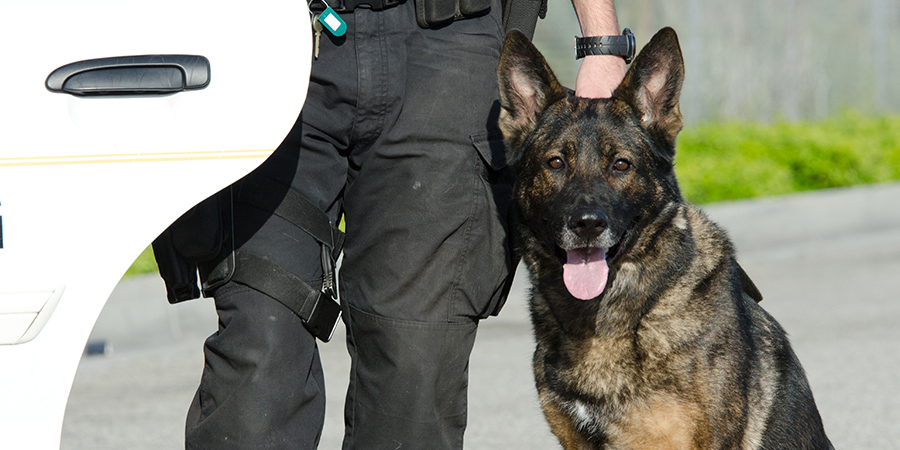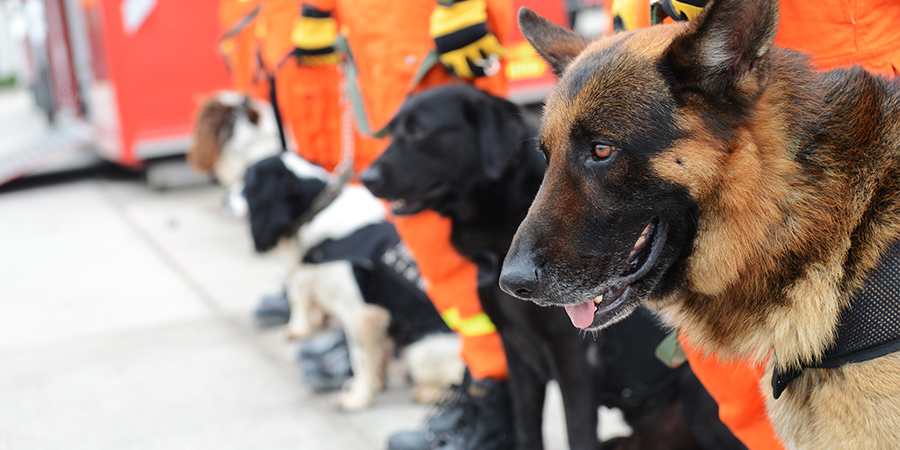Tails
Making pet parenting easy

A Diamond in the Ruff – Spotlight on Working Dogs
This entry was posted on 2018-04-25.
The best therapist in the world has fur and four legs.
Everyone should spend time with a working dog, simply to learn from them. If only all humans could possess the same calm, patient and willing temperament that these dogs have, the world would be a better place. A guide dog, usually a Labrador, has been trained to lead visually impaired people, but these are not the only types of working dogs that exist.
Let’s take a look at some examples:
- Police Dogs – These dogs have been trained to work alongside the police force, and are there for added protection. They are known as K-9s, and work via verbal prompts and hand gestures. Some of these dogs are also detection dogs, and are chosen for their incredible sense of smell. You’ll often find these dogs at airports, where they are used to sniff out illegal substances, explosives and even blood. The most common breeds used are German Shepherds, Labradors, and Foxhound.
- Military Dogs – These dogs work with the military and are used for their great detection skills. They use a variety of dogs including the lesser known Belgian Malinois.
- Herding Dogs – These dogs work with livestock, usually on a farm. The most common breeds are German Shepherds and Border Collies.
- Therapy Dogs – Love from an animal can go a long way. These dogs are used as part of a patient’s recovery plan, and they offer emotional support to sick or injured patients. A therapy dog needs to have a very specific temperament, including patience, and gentleness. Many breeds can be trained and used, but the most common are Labradors, German Shepherds, Beagles and Border Collies.
- Search and Rescue Dogs – Again, these animals have been chosen for their exceptional detection skills, including a phenomenal sense of smell. The breeds most used are German Shepherds, Labradors, Golden Retrievers and Bloodhounds.
- Service Dogs – These dogs, including guide dogs, are trained specifically for those with disabilities. They help with mobility, seizure alerts, hearing impairments and even diabetes. The breeds include Labradors, German Shepherds, Border Collies and Poodles. It’s interesting to note that a poodle can detect a food allergy by its scent, which can be a life saver for people with severe allergies.
You might own a working dog as a pet, or your dog might be used in one of the examples above. Either way, you’ve got yourself a dog that works hard, and one that needs constant stimulation. One of the most important things to consider, is that your dog is probably more active than most. Just as you need a bigger meal after exercise, so does your dog. Consider buying food for active dogs, and make sure you buy according to their size and weight. Keep your dog constantly enthused and entertained by playing with it, with balls, Frisbees and even ropes. Dogs thrive through play, and keeping them fit and healthy is essential.
A few facts on guide dogs:
- They are trained to judge height and width so that their owner does not hurt themselves.
- They will go anywhere their owner tells them to go, but if they sense danger they will refuse the command. This is called ‘intelligent disobedience’.
Working dogs are always hard at work – no wonder we say we’re dog tired after a day at the office. These incredible dogs have been trained to assist and improve the quality of life of those they are helping. So, the next time you come across a working dog, don’t forget to say a big thank you furry much for all that they do.
ABOUT THE AUTHOR

Christine Bernard
Christine Bernard is a freelance writer, a published author and the owner of Flat White Magazine. She lives in Cape Town with her husband and her two guinea pigs, Arthur and Bean. Other than her family, she loves four things in life: coffee, wine, books, and animals. She believes that a hug from an animal is worth more than a lifetime of therapy.





